The Masai Mara is one of the most impressive safaris you can do in Africa. It borders the Serengeti of Tanzania (if you want to read our experience in this park in Tanzania you can click here), giving rise to one of the most beautiful spectacles of nature, such as the great migration of wildebeest and zebras that cross the border and the Mara River during a certain time of the year in search of better pastures.
It covers a wide expanse of African savanna where families of lions and lionesses, cheetahs, leopards, herds of elephants, buffaloes, giraffes, hippos, crocodiles and large groups of herbivores, among others, live freely on the side and side of the Mara River. There, you can see them in action during their day to day, feeding, playing, fighting, resting and walking through the different spaces of the Masai Mara.
You will need more than one day if you want to visit the different areas of the Masai Mara since, like the Serengeti, its extension is immense. It is one of the essential places to visit if you go to Kenya where there will be many moments that you will be impressed by the wildlife and fauna that you will find.
How to get there?
By car: The car is the easiest transport to get to the Masai Mara Reserve. From Nairobi, it will take about 5/6 hours, it is about 270km. You should take the A104 road to Limuru Town, and then turn onto the B3 road to Mai Mahiu. Once in Mai Mahiu, you have to take the detour to the left in Narok and you will finally arrive in the Masai Mara.
From Lake Nakuru, it will take about 6/7h, about 280 km. Take the A104 road to Naivasha and turn onto the C88 to Mai Mahiu. Then turn towards Narok on the B3 to the Masai Mara.
We did it from Kericho. In this case, it will take around 4 hours if you go directly to the Oloololo Gate. You must take the B1 road to leave the city, and continue on the C23 road until you reach the town of Kaplong. There you will have to take the B3 road towards Narok, and turn to the town of Chebole towards Chebunyo, where you will take a last detour along the Chebaraa Road where after 24 kilometers you will take an unpaved road where you will already find animals such as zebras and impalas . This road leads directly to the Oloolo Gate and to the accommodation area outside the park. After 17 kilometers, you will have to look at the map because you will have to turn through a little traveled road where you will need 4×4. We recommend that you put Maps.me in order to get well to your destination.
If you have already hired an agency to do the safari in the reserve, you should discuss with them the pick-up point. Normally it is the capital, Nairobi or the point that you decide for your route that goes well for both parties.
By public transport: We do not use public transport, but Joan from Against the Compass used it to get to the Sekenani gate, in the eastern part of the reserve, to do the safari and sleep at Camping Mara Explorers. You can follow his fantastic explanation of how to do it in this article.
By plane: It is the most expensive and luxurious option. There are flights that connect the capital, Nairobi, with the airport within the reserve, Mara Serena. They do not go below 200/300$ per person.
¿How is Masai Mara divided?
Territory of the Maasai tribe, the Masai Mara is a National Reserve. This is divided into 2 parts that are independent of each other:
- Mara Triangle: it is administered from Transmara County and is managed by the Mara Conservancy. It is the only place where you can sleep inside the park. The main entrance to access this part is Oloololo Gate. At the entrance you can pay the entrance corresponding to this part of the Reserve with card or Mpesa. Remember that it lasts 24 hours.
- East Area of Mara River: it is administered by Narok County. It is the largest part of the entire reserve. Its main entrances into this part of the reserve are the Talek Gate and the Sekenani Gate. At the entrance you can pay the entrance corresponding to this part of the Reserve with card or Mpesa. Remember that it lasts 24 hours.
- The Masai Mara Conservation Area: surrounds the two parts of the reserve. It is part of the ecosystem of the Reserve and helps its conservation. There are many accommodations in this part. Live the Maasai community.
Each county receives the corresponding payment for the tickets independently, so if you want to access the other part of the reserve you will have to pay for a new ticket. There is a bridge, the New Mara Bridge or also known as Purungat Bridge, which connects the Mara Triangle (west) with the eastern part of the reserve, which is the largest part. If you want to access the other part, just go to the bridge and pay the entrance to the door that you will find there.
We first visited the Mara Triangle one afternoon and the next morning. We had about 3 hours to finish the 24 hours of entry. We wanted to go to the eastern part, in the accommodation we had near Talek Gate, but make use of the entrance the next day (and thus rest for an afternoon). We asked if it was possible to enter the eastern part making use of these 3 hours that we had left over from the other part and buy the ticket the next day. They let us through, checking us in and letting us make use of these extra hours on the way to Talek Gate.
The animals are not enclosed in any fence, they can move freely throughout all parts of the Reserve and the conservation area. Therefore, you can always have the opportunity to see them. It is important to take into account the time of visit and migrations to know where there will be more. Ask the rangers at the entrance gates to the reserve, they will inform you of the easiest points to see the animals.
¿When is the best time to visit Masai Mara?
When you ask local people, they say that Masai Mara can always be visited and that it is always a good time to do so. For us it would be important to avoid the rainy seasons that go from March to June and also from the end of October to December. Therefore, the months of January-February and also from June to October would be the best options.
It should also be taken into account that the Masai Mara together with Serengeti, are part of a common ecosystem with internal migrations between the two parks and also in the different areas of each one of them. So if you want to see it depends on which animals it is important to take into account what time you go to and where they are at that time.
If you want to see the great migration of animals in search of new pastures (explained below in the section: What to do in Masai Mara?), it usually takes place in July-August. However, from our experience, we explain why it is not sure that you will see the migration. However, going to the Masai Mara in any of the proposed seasons will be a great experience and you will surely see many and many animals.
What do you need to bring?
Going on safari is not done every day. Always when the time comes to prepare to pack, there are some doubts about what to bring, if I leave something at home… Here are some tips that always go well when packing a backpack or suitcase when we go on a trip, and especially when we go to go on a safari, which is a very specific activity:
- Take only the necessary in your backpack: We tend to put everything in our suitcases, although we can usually save them “just in case”. We must keep in mind that the backpack or suitcase we take is preferably made of fabric/canvas, which is not rigid, as in safaris there is not much space inside the car and luggage is usually placed on top of the vehicle to save space.
- Take very diverse clothes: In Kenya temperatures change a lot during the day. It is usually cool in the mornings and evenings, while at noon it is usually very hot. Long pants in the morning/evening, along with long-sleeved T-shirts/shirts will protect you from the cold as well as from mosquitoes. It is important to wear light and comfortable clothes, with which you feel comfortable and can make many types of movements. At the same time, keep in mind that dark colors, such as navy blue, attract insects, especially the tsetse fly that is active during the day. It is advisable to wear natural colors such as: dark green, khaki, brown, beige…
- Highly recommended to wear sunglasses, a hat or headscarf, sunscreen and lip balm.
- Include a raincoat inside your backpack. It often rains unexpectedly and suddenly, so having a raincoat on hand can be helpful in not ending up wet like a duck. It also goes well as wind protection in the early hours of the morning or evening.
- Bring good binoculars and/or a good camera. They will help you to see the animals you find much better, which you sometimes do not find on the side of the road. If you like photography, keep in mind that it is good to have a telephoto lens of about 300, with extra spare batteries, a good cleaning kit for the material because there is a lot of dust, enough memory cards and some filters that also protect the telephoto lens.
- Travel with a good health insurance. We recommend that you hire Chapka Insurances, a company that offers tailor-made packs for your trip. If you click here, you will get a 7% discount.
Permits and prices
Visiting the Masai Mara is not cheap. In general, doing a safari in Kenya is quite expensive as the price of tickets is quite high. The entrance fee to the Masai Mara is 80$ per person per day. Keep in mind that entry lasts 24 hours, so if you enter at 3:00 p.m., you can enter the park the next day until the same time.
One way to save money on your stay is to calculate how many 24-hour tickets you will need and choose your accommodation very well (if it is inside the park, you will have to pay entrance at all hours even if you take an afternoon of rest. In addition, the accommodations are more expensive) . To sleep in the park you have a discount of 10$ to the price of the entrance, therefore it will cost you 70$.
If you go with your vehicle, apart, you will have to add the entry fee of the car, which is about 400 KSH (about 4€).
¿Organized safari or by your own?
The Masai Mara is one of the most impressive reserves in Africa. If you want to go on safari on your own, you can. There is no obligation to enter with a guide and you can try to find out for yourself where the animals are. In addition, in Kenya (unlike Tanzania and Uganda) the entrance by vehicle with local or foreign registration is very cheap, thus facilitating that you can access the park freely with your own vehicle.
Anyway, the Masai Mara is a giant reserve. If you travel on your own, perhaps you will miss some of the most important parts where animals live, and you will get lost along the different paths of the reserve.
In the Mara Triangle, we enter freely and without a guide with our own car. It is relatively easy to drive through this part of the reserve (no 4×4 necessary), the roads are well marked and we find hyenas, large herds of elephants, buffaloes, hippos, crocodiles, giraffes and lionesses with ease on our own. Therefore, in this part we think that it is not necessary to go with a guide.
On the other hand, in the eastern part of the Reserve there are many more roads that are not very marked and the 4×4 is mandatory for the crossings of some rivers and roads. We drove this part for a few hours without a guide and we had a hard time finding some of the top animals. Instead, the next day we went with a guide in our car who knew the area and we did a very complete tour within the Reserve where we saw cheetahs, lions, leopards and a large number of animals in the wild. In addition, the guide was showing us the paths to follow, thus not worrying about looking at the map and being able to enjoy the Masai Mara Reserve even better.
What to do in Masai Mara?
– Enjoy nature and fauna by doing a safari through the park
The Masai Mara stands out for its natural diversity that we can find, especially for its fauna. We can find the big Big Five: the elephant, the buffalo, the leopard, the lion and the rhinos. You can also see large herds of zebras, wildebeest and gazelles, giraffes, hippos, crocodiles, impalas, 400 different types of birds… in an African savannah landscape with plains of immense and endless extension.
The most difficult to see are the leopard and the rhinos. We the latter, the rhinoceros, were not lucky enough to see it in the Masai Mara, but we did in the lake Nakuru or in the Ol Pejeta Nature Reserve.
The truth is that the large number of animals we saw is impressive. We assure you that you will see many animals, especially at sunrise and sunset. It doesn’t matter if you go alone without an organized tour, move around the reserve without fear, using Maps.me and following the advice we have given you in the section: safari by your own or organized by an agency?
– See the Great Migration
The Great Migration is one of the most impressive natural phenomena that occurs in the Masai Mara and in the neighboring reserve of Tanzania, the Serengeti. Both reserves, together with the Ngorongoro crater, are part of the same ecosystem divided only by the political borders that humans have set. Animals do not understand borders.
Every July, or occasionally August, wildebeest and zebras cross the Mara River after having traveled more than 1,000 km from the Serengeti in search of fresh new pastures. These animals will feed there until in October, early November, they will return to where they came from: in the Serengeti of Tanzania. If you are near the Mara River at this time, then, you will be able to see how these animals cross the river fighting for their survival while large crocodiles wait impatiently for their lunch.
We visited the Masai Mara in late August and did not see the river crossing. We tried it the two days we were there and it was not possible. We asked everyone and they told us it was running late this year. The surprising and unpredictable thing about nature is that you never know when it will happen or if it will really take place this year. But the sad and pessimistic thing is that it is because of the human footprint and climate change. Rising temperatures and changing rainy seasons are changing the behavior of animals in Africa. If you want to know more about this sad news you can consult this article from El País of José Naranjo and Carla Fibla.
¿Where to sleep?
The Masai Mara has a wide range of accommodation but not all options are acceptable for all budgets. There are different types of accommodation: lodges, tented camps and campsites. One aspect to take into account is that normally the accommodations outside the reserve will be cheaper than those of the same category inside.
It is very important before choosing an accommodation to do a little planning of what you want your safari route through the Masai Mara to be. This route will determine the accommodation you will choose and what trips you will have to do to start the safari or return after doing it to your accommodation.
Remember that you should orient your selection around the access gates and which part of the park you want to visit: the eastern part (with the Talek and Sekenani gates) or the western part, the Mara Triangle (with the Oloololo gate).
Accommodation near Oloololo Gate or inside the Mara Triangle
– Enchipai lodge: It is located 20 minutes by car from the Oloololo Gate, on a mountain where the Maasai community lives and facing the Masai Mara. As you can imagine, it has great views of the reserve, it is spectacular! It was still under construction when we stayed there, and we were able to camp on its grounds. The Lodge is promised to finish this October. It will have about 5 cottages with great views of the plain of the Masai Mara savanna, swimming pool, restaurant, gym… All the facilities that the tourist may need. A dream place! You can contact Mike by phone: +254 711 222524 or by visiting his website here.
– Eluai Camp: It is a camp that is located inside the Mara Triangle. It has a camping area where there is no facility: there are no showers or toilets. You need to bring your own food and to make a fire at night. It has the great advantage that it is inside the reserve and has good views, therefore you will be able to extend your stay inside and not have to calculate how long it takes until the exit door before closing. The price is 30$ per person/night. It is necessary to pay for the accommodation at the park entrance and check that there are free places.
Accommodation near Talek Gate
– Cocodrile Camp: Located just off Talek Gate, it is the highest rated campsite in the area for its proximity to the reserve, views of the Talek River and its facilities. It has furnished tents overlooking the river but you can also camp in an area full of trees and shade. The camping area has an area where you can cook and toilets and showers. Very good value for money, 800 KSH per person per night. The restaurant has an outside area where you can light a fire and see the reserve from there. The staff is very friendly and eager to make you feel at home. You can contact them through their website here, or contacting with Brian on +254 713 538027.
We decided to camp at this campsite for two nights to visit the eastern part of the reserve. If you go with your vehicle and you want a guide who can guide you in the places where the animals are, you can contact Patrick, a very nice young Maasai born in the town of Talek who knows the whole area and roads very well. His phone number is: 0700443260. It must be said that thanks to him we were able to see spectacular wildlife scenes and we got to see the leopard.
– Aruba Mara Camp: It is located 50m from the Talek gate. It has furnished tents where you can spend the night (25-115€) and also a camping area. Camping prices are 9€ per person. Hot showers and cooking area. The camping area does not have much shade. You can contact them at their website or by phone: +254 723 997 524.
Accommodation near Sekenani Gate
– Mara Explorers Camp: It is located 3km from the Sekenani gate. It is a good option if you have decided to go backpacking through Kenya and you do not have your own vehicle. You can get there by public transport. They offer that you can go on safari with them. You can take your tent or pay to sleep in one there. You can contact them here or calling them by phone: 0706 856216.
Our route
DAY 1: Our route through the Masai Mara reserve started from the gate of Oloololo, to visit the Mara Triangle. We bought the 24 hour tickets and the entry permit for the car with the Rangers at the door and we got ready to go inside. We were nervous, we would finally enter into one of the best known and most animal reserves in Africa!
Just starting the journey with the car, on a very well maintained dirt track, we began to see animals everywhere, Thompson’s gazelles, wildebeest and a large herd of elephants. Perhaps there were more than 40 elephants together that were preparing to cross the road in front of us. We stopped the car and the engine and enjoyed the spectacle: mothers with young with huge tusks, they went in search of fresh grass. After the Reserve received us with this gift, we continued the trip, finding some giraffes eating acacia leaves right next to the road. They stretched their necks to reach the most tender leaves, with us right next to us that we could almost touch them. We could also enjoy herds of zebras and gazelles, hippos and crocodiles in the river resting in the sun, waiting if some cwildebeest cross there for hinting them, warthogs nibbling roots, etc…
Finally, with the sunset over the mountains, we left the reserve and headed to Enchipai lodge where we were welcomed with a large bonfire and we shared Maasai and Catalan stories with the moonlight in the sky.
DAY 2: We get up early to be at 6.30 in front of Oloololo’s Gate again. It is known that in the morning, when the sun rises, it is when the animals are most active. So just as we entered, the sunrise with some acacias and elephants told us good morning. Then we decided to go through paths that we had not crossed the day before. One of the first surprises was a group of hyenas. The oldest was located in the middle of the road, surely resting from a heavy night and the others next to it, lying asleep. A curious hyena, one of the smallest ones, came right up to our side. He had that suspicious smile that has made them get a “bad name” but we know that they are much more than that: social and strategists, with a very important role in the food chain.
After this, and without being too recovered from what we saw, we saw a lion on a rock that rose above the savannah. We saw a car going there and we followed it. The lion left very quickly but we found two lionesses eating their breakfast for the day. We had done it, we had seen the first lionesses eating of the trip! (What we did not know is that the next day we would be even more surprised).
After those two shocking scenes, we tried to get lucky to see the river crossing but we only found the crocodiles and hippos from the past day. We stayed for a long time. Hippos have an “I don’t know what” that hypnotizes looking at them. Next we saw some vultures finishing eating a predator’s prey that had already been fed up. They fought among themselves to see who could get a better bite.
Crossing the savannah, among herds of zebras, impalas and gazelles we reached the New Mara Bridge. There they gave us the go-ahead to use the remaining hours of the Mara Triangle in the eastern part of the park. The eastern part of the park did not receive us with the same splendor. We had the adrenaline rush in the morning and we expected to see lots of animals. We wanted action and we found peace. The African savannah received us full of fields of herbivores in search of the best pastures. After that long morning and about to finish the first 24 hours of the first entry, we decided to exit through the Talek Gate and rest in the afternoon at the Cocodrile Camp. A cold beer in the evening served to conclude the day.
DAY 3: The next day started early too, we intended to spend a full day on the Masai Mara Reserve. We were accompanied by a young Masai named Patrick who would guide us throughout the day. We hoped that with the help of a guide, the day would be better than the first hours in the eastern part of the park that we had done the day before. We didn’t know what awaited us that day or the set of emotions we would experience, but it all started within 10 minutes of entering inside. A herd of lionesses with their cubs were eating a freshly hunted wildebeest. The scene was spectacular, the noises, how they were devouring the animal and stretching the skin to access the meat, how the positions were exchanged so that the puppies could eat… We would have stayed there all the time.
We decided after a long time to go on our way. We entered into paths full of herds of buffalo marking terrain and looking at each other with that face of few friends until we saw a crowd of cars in the background. What was going on? Something very important! A group of four brother cheetahs crossed the savannah. We arrived just as the four of them were climbing a branch to get a better view of the horizon. We had never seen 4 cheetahs together! The cheetah is a solitary animal that only groups if it is with its brothers. And the Masai Mara kept giving us more scenes like that!
Still euphoric for this moment, we saw close to two male lions. One was eating and the other, bigger, was looking around. The latter was young and imposing. While we were watching them, a herd of elephants crossed right next to the lions.
The day went by with incredible scenes of herds of herbivores, groups of hippos, a leopard very hidden inside a bush that was hard to see… Until almost at the end of the day, Patrick told us that they had seen a dead gazelle on a tree, sign that a leopard would go looking for him or be nearby. We wanted to see a leopard clearly, so yes, we took a risk and went to a far end of the park. There we saw all the other safari cars waiting by the tree and us on the other side of the river, looking to see if he was coming from the other side. And do you know who was lucky enough to see it first and enjoy it??? Well, yes, we! And this time very close and clearly seen!
The Masai Mara said goodbye with a big scene as we returned to the camp with a smile from ear to ear, we never tired of repeating to ourselves how lucky we had been!

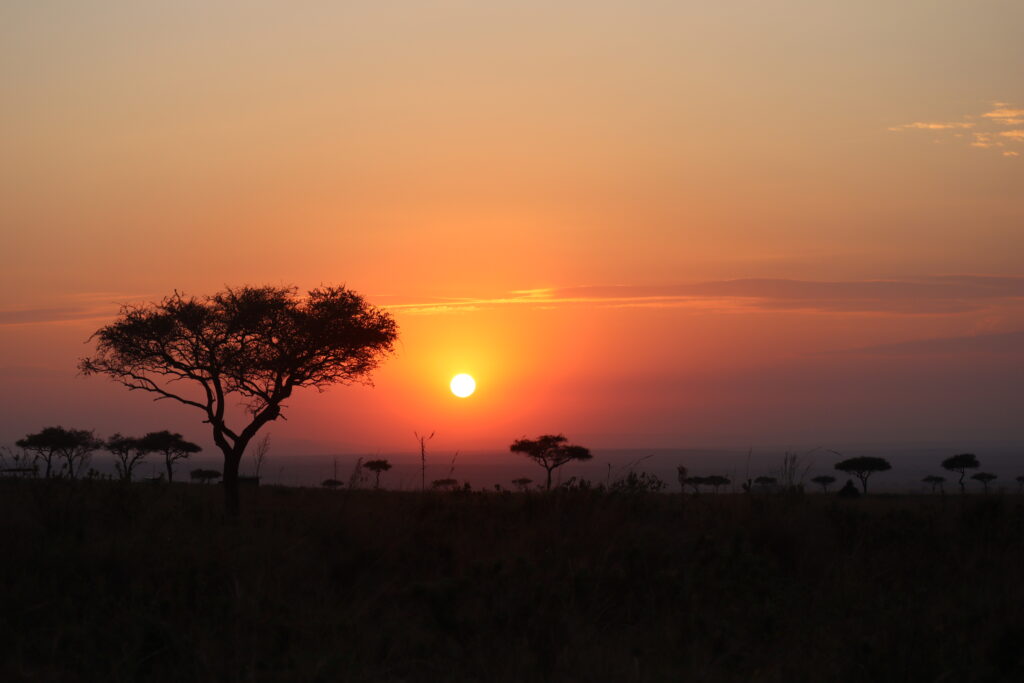
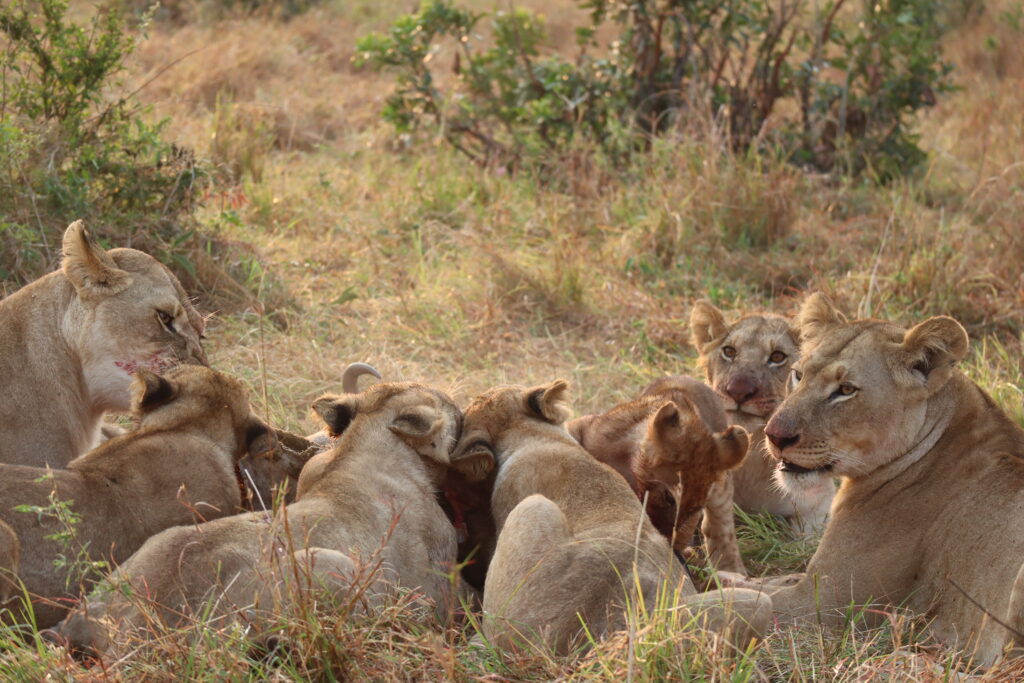
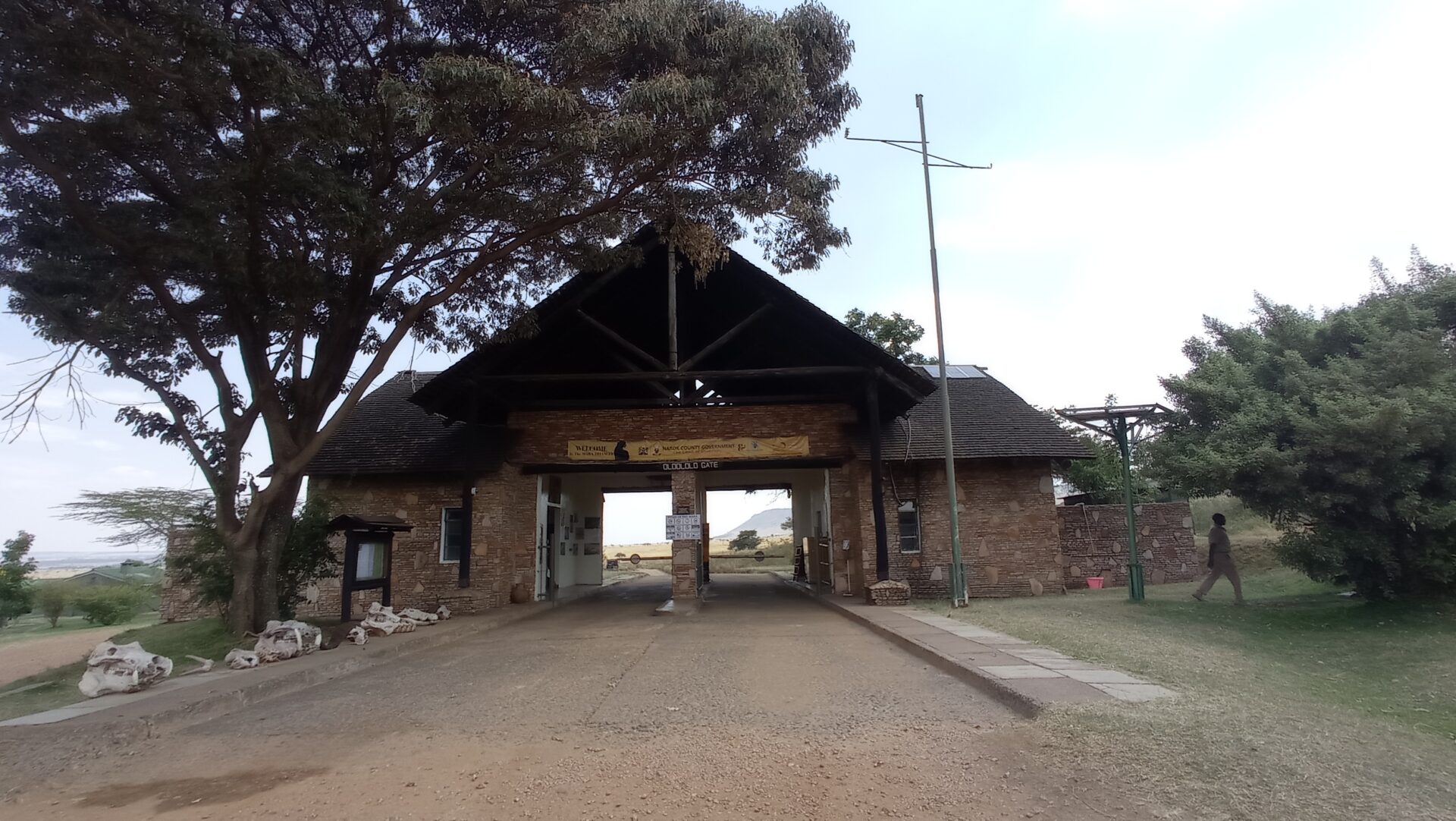


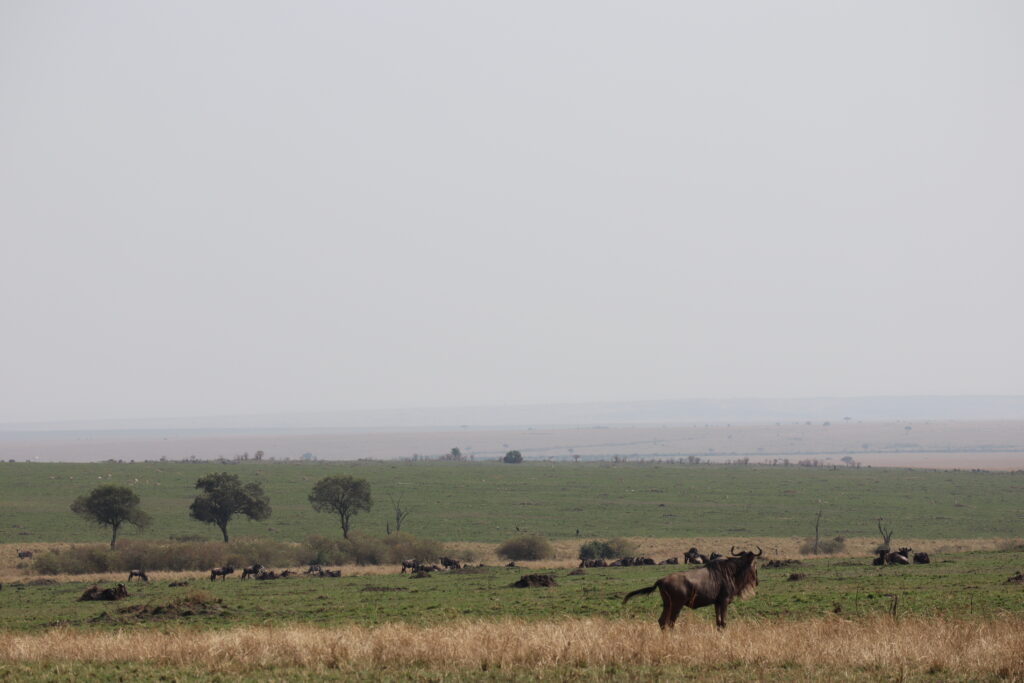




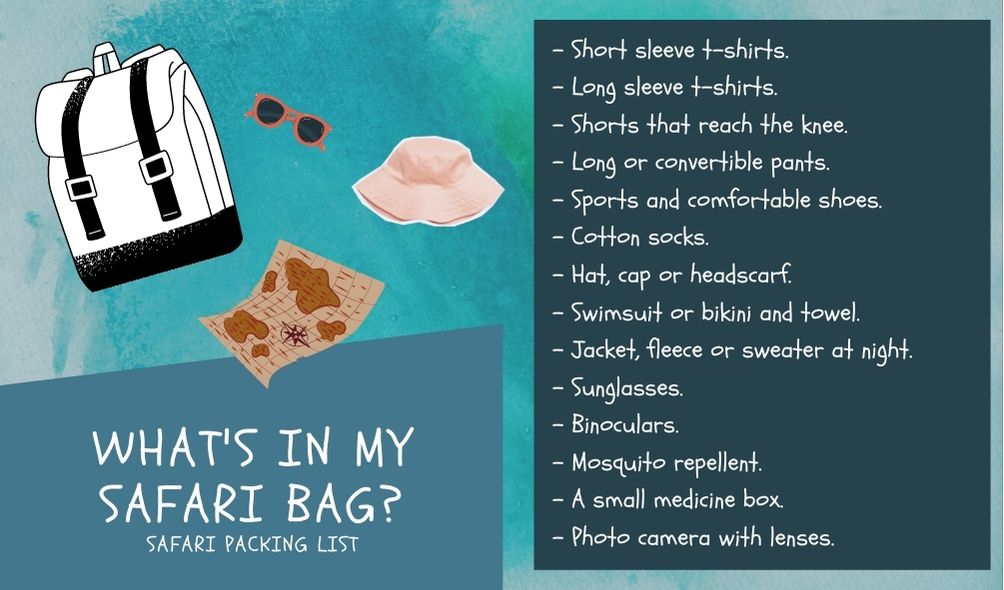
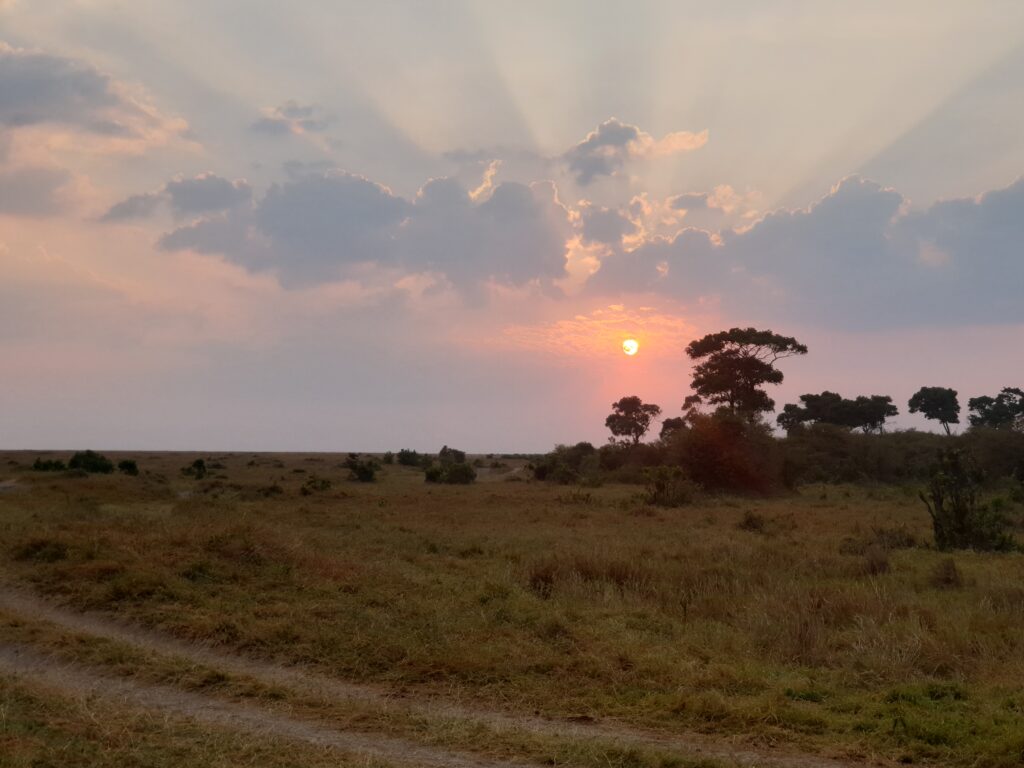





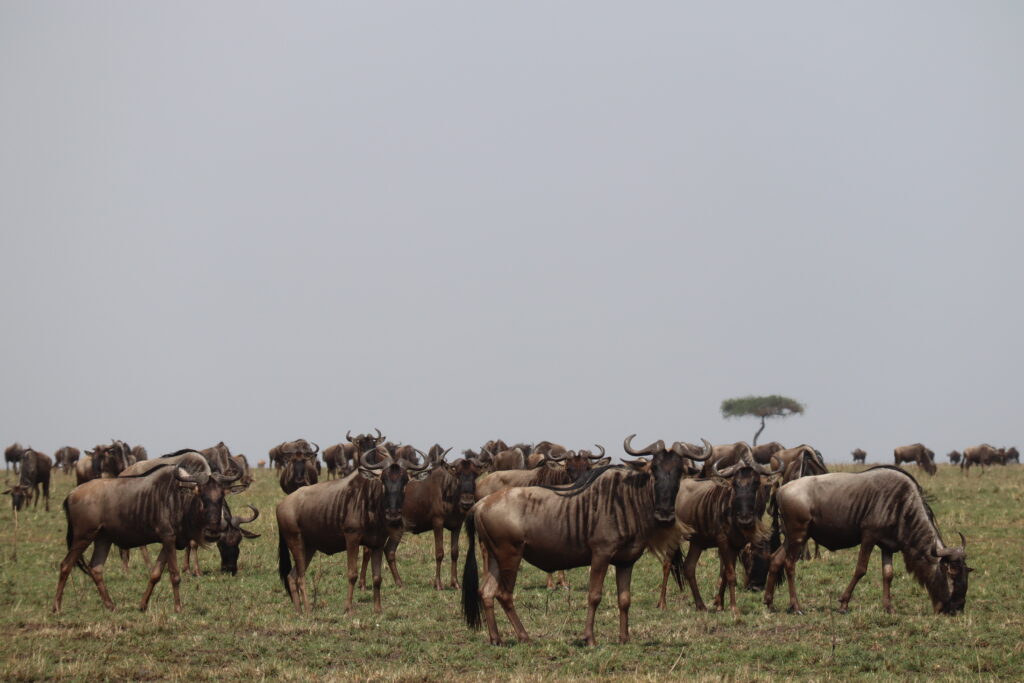


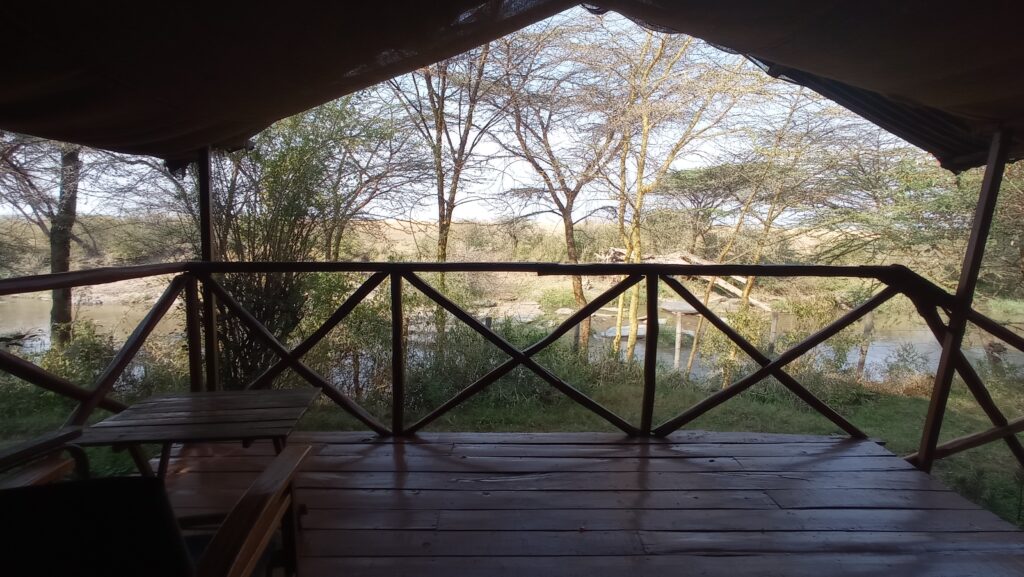
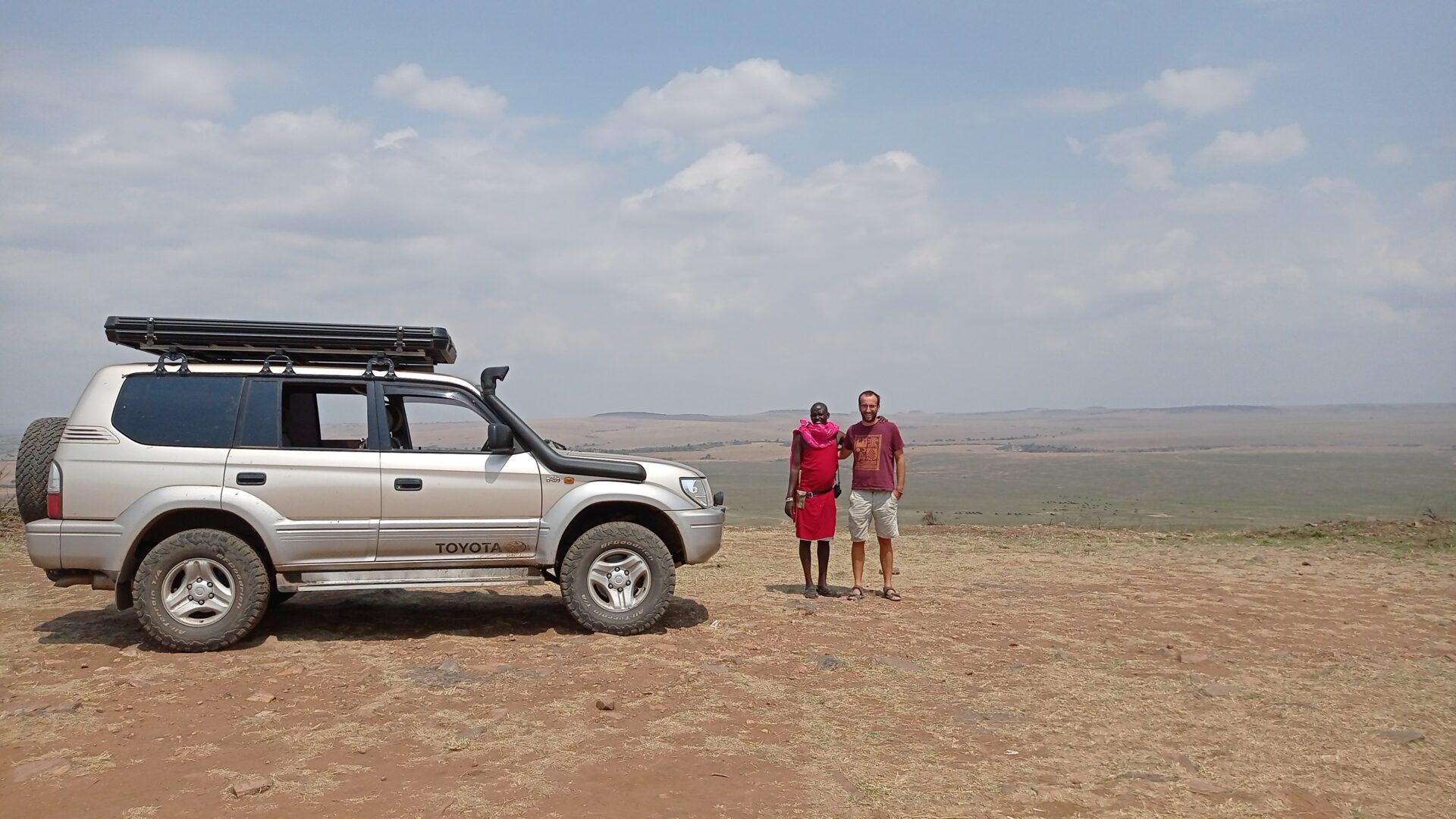

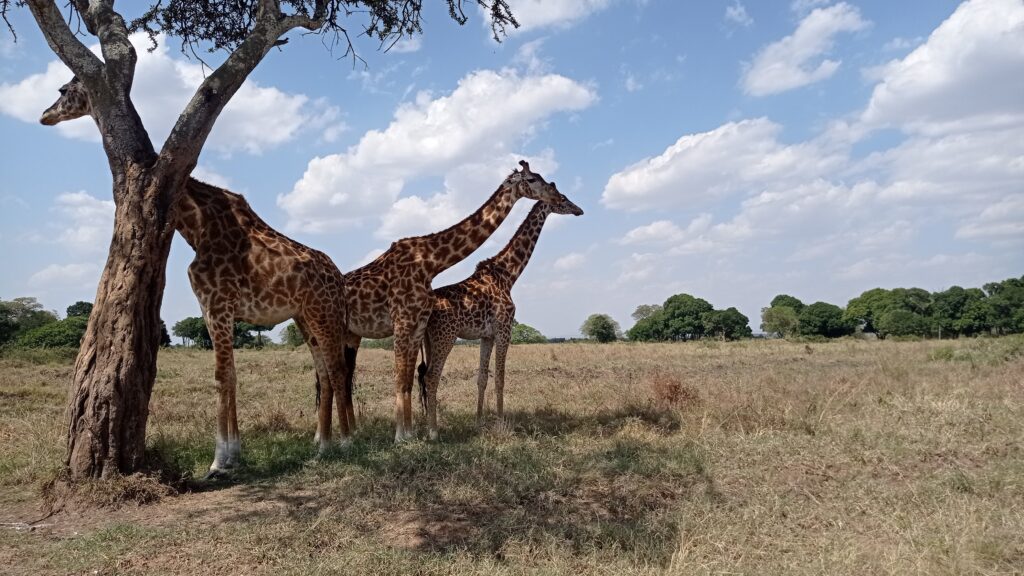
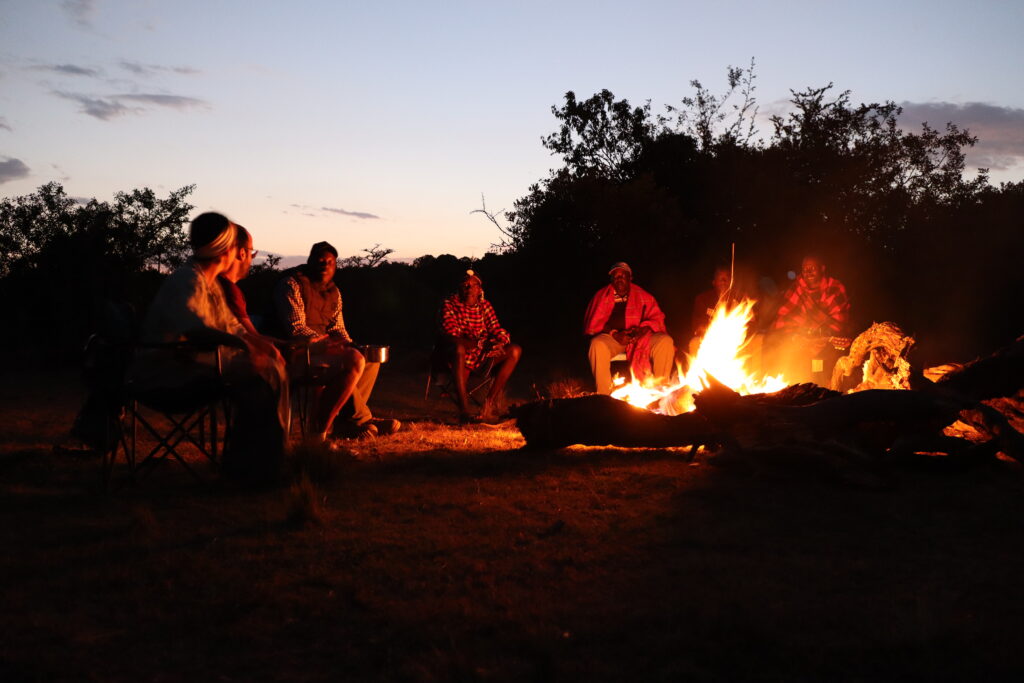




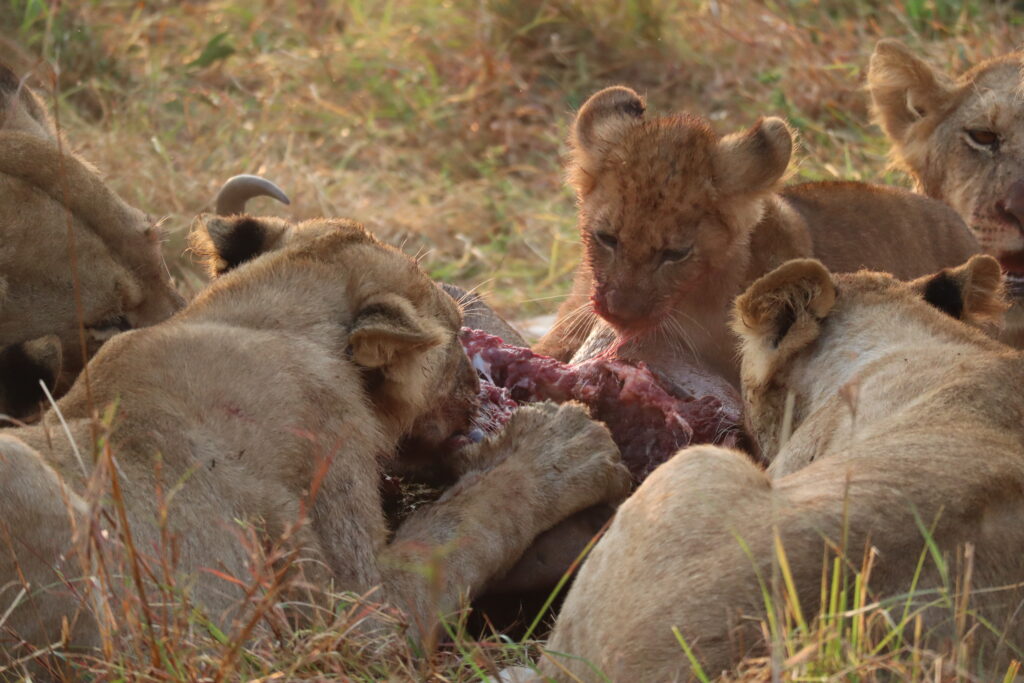
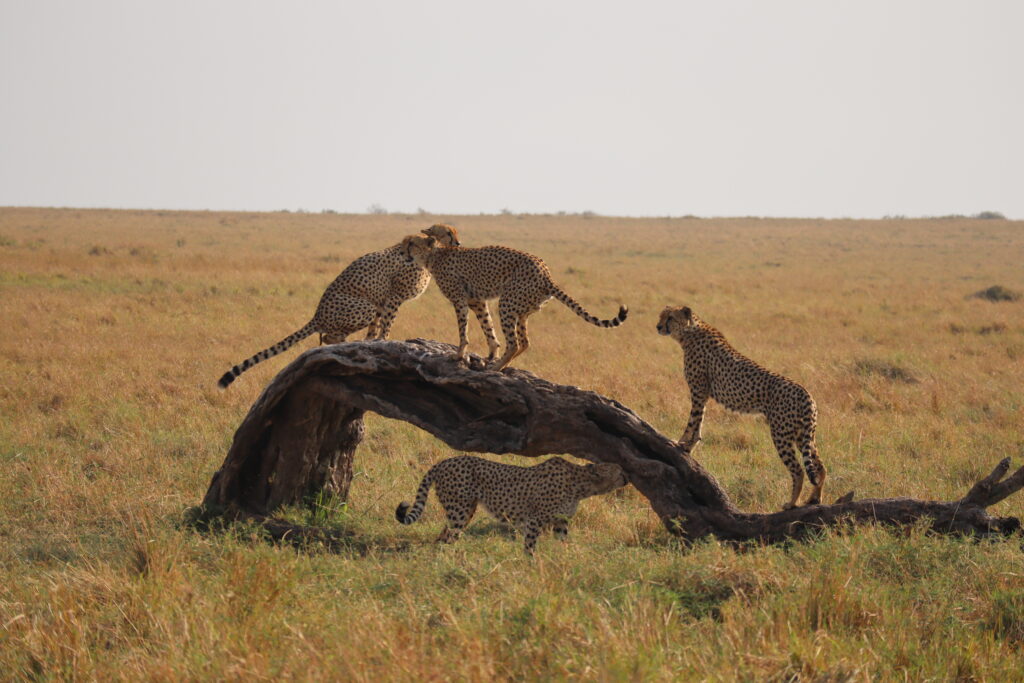

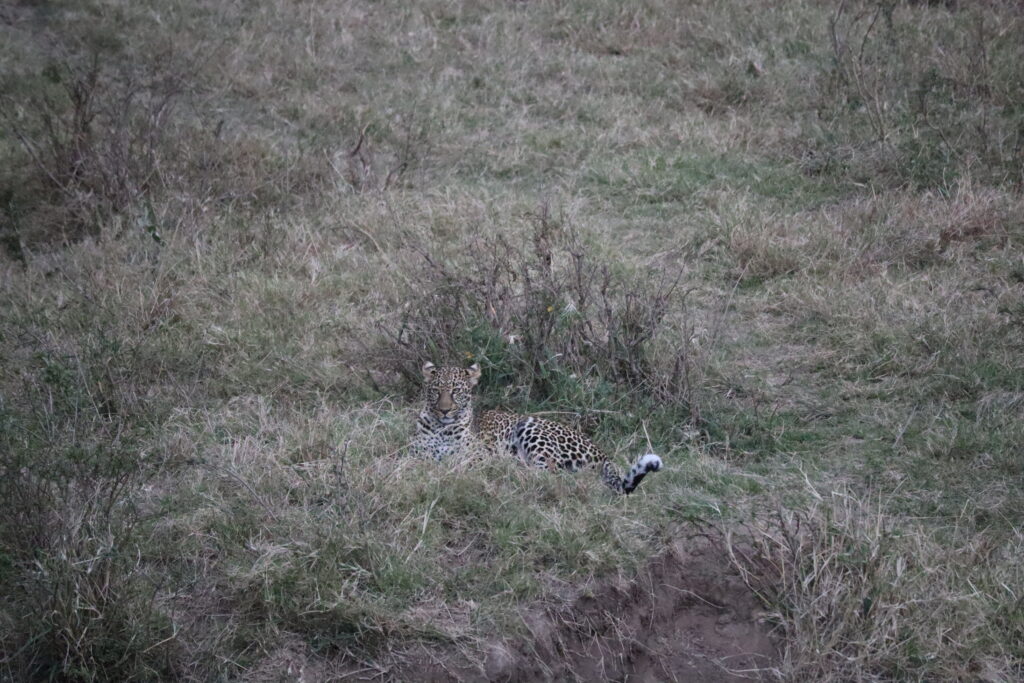

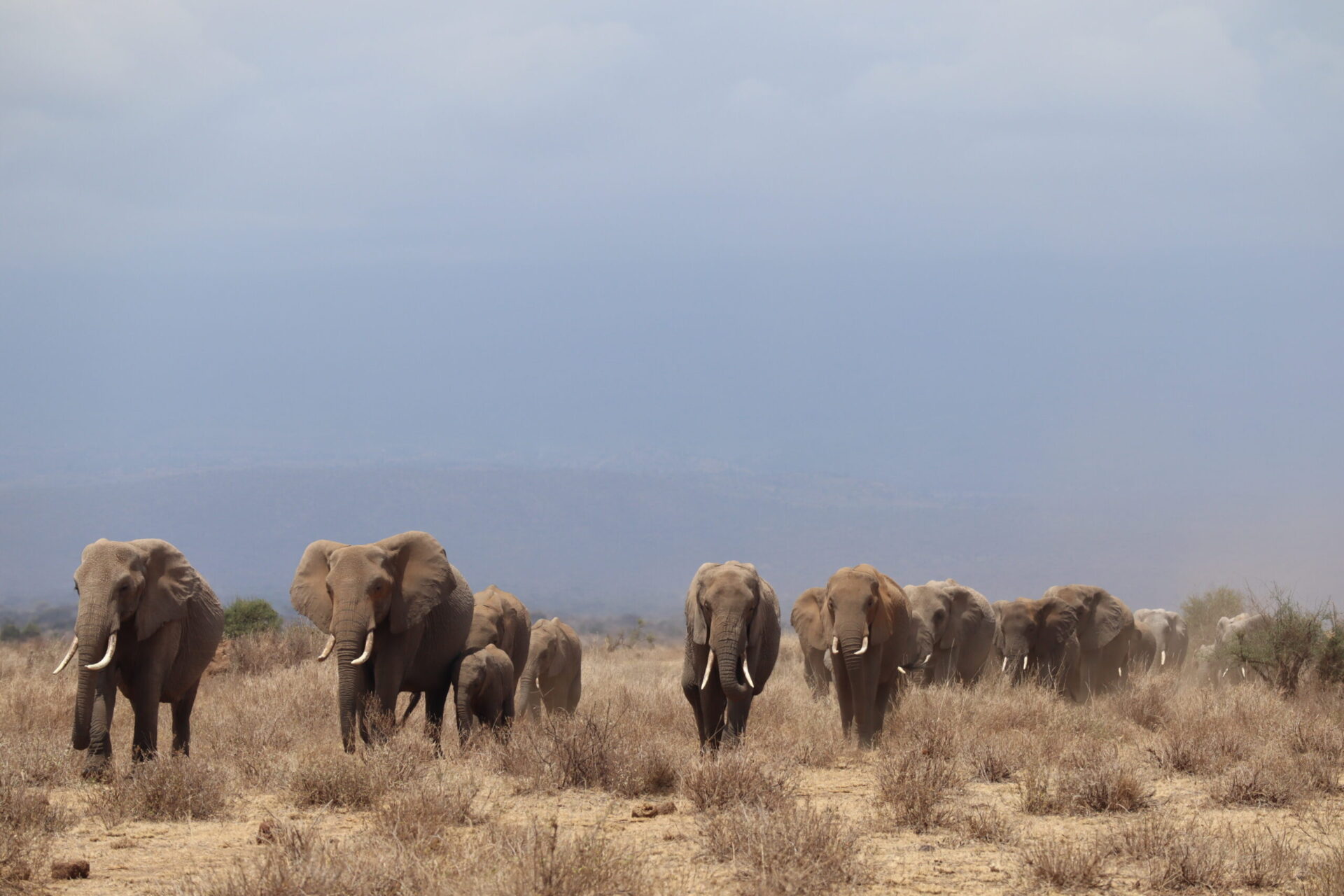

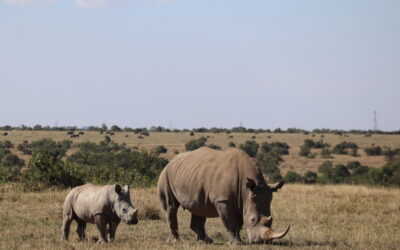
0 Comments